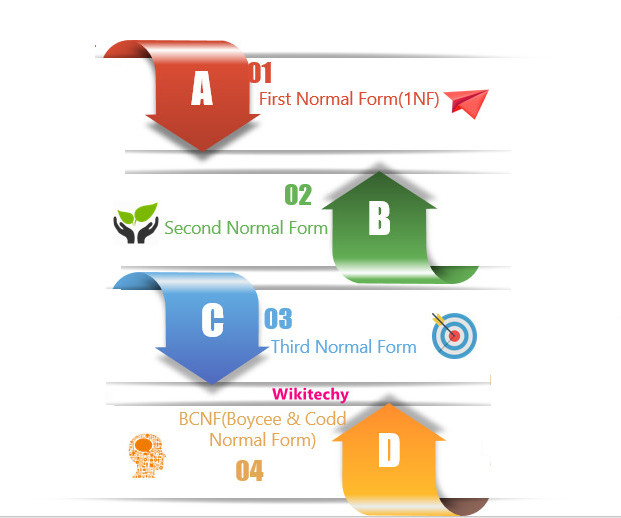There are 4 types of form in Normalization :

First Normal Form(1NF)
- If a relation does not contain any multi valued attributes, then the relation is said to be in First Normal Form.
- A relation is said to be in First Normal Form if each attributes contains only single value.
- Rule of First normal form states that an attribute of a table cannot have multiple values. It can have only single values.
Second Normal Form(2NF)
- A table is said to be second normal form on two conditions
- Table should be in First Normal Form(1NF).
- Any non-prime attribute is not dependent on the proper subset of the candidate key of the table.
- Non prime attribute is an attribute which is not a part of any candidate key.
Third Normal Form(3NF)
- A design of the table is said to be third normal form(3NF) only if
- A Table is in second normal form(2NF)
- Transitive functional dependency of non-prime attribute on any super key should be removed.
- Non prime attribute is an attribute which is not a part of any candidate key.
Boycee & Codd Normal Form(BCNF)
- An advanced version of third normal form is known as Boycee & Codd Normal Forms(BCNF).
- BCNF is stricter than third normal form.
- A table is said to be in BCNF if it is already in 3NF and every functional dependency should be the super key of the table.

